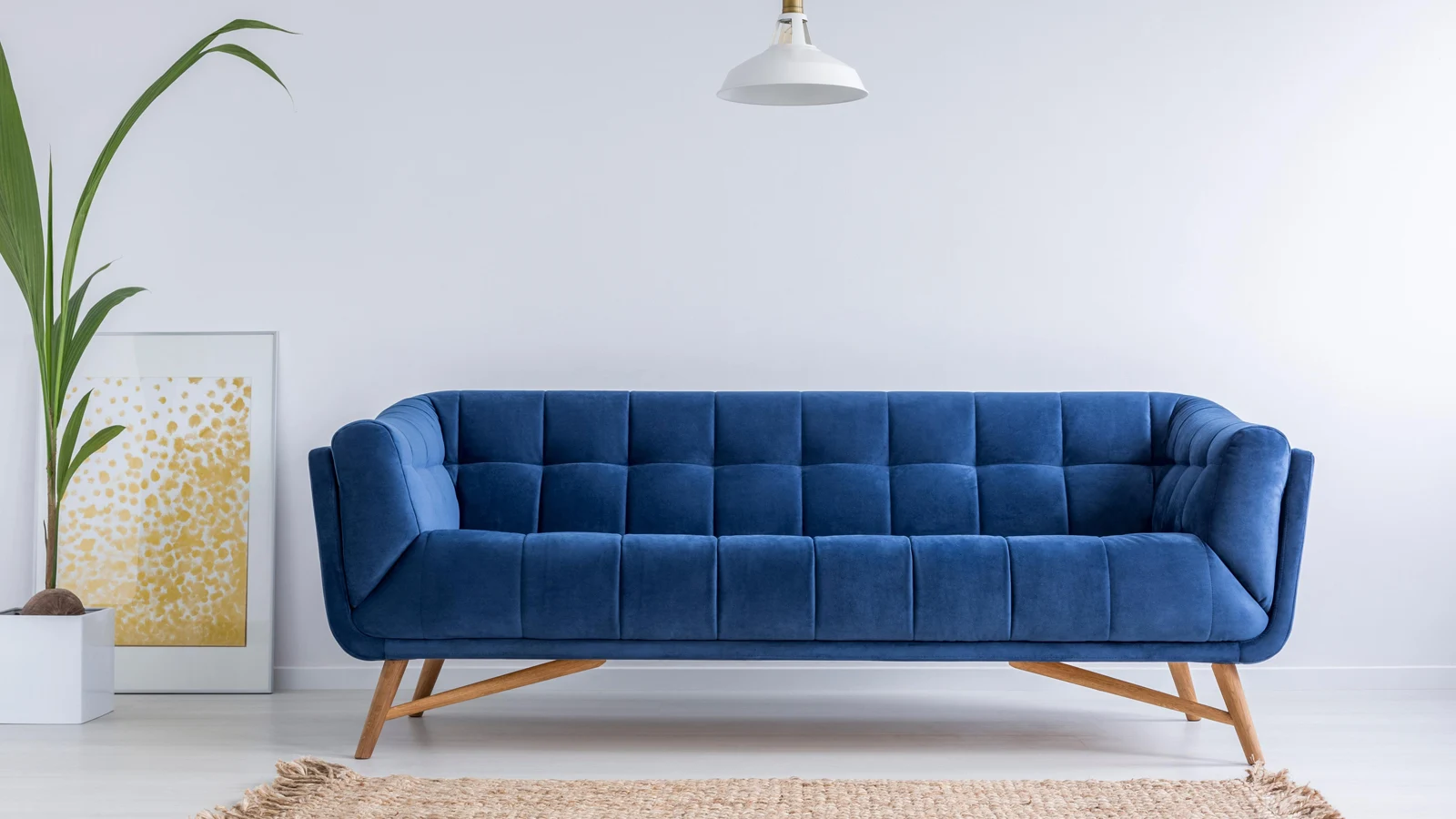Building an upholstery business lets you be creative and independent. You can turn old furniture into beautiful, valuable items. This job helps you show your artistic skills and make unique things for customers.
If you want to learn how to start an upholstery business, you also get to set your own schedule and plan your goals. With a good plan and hard work, it’s possible to succeed in this rewarding field.
Key Takeaways
- Before starting your new business, research the market to understand services, tools, and customer preferences.
- To guide your success, create a detailed business plan that outlines your services, pricing, marketing strategies, and financial goals.
- Set up an organized and efficient workspace that enhances productivity and safety, allowing you to focus on quality work.
- Build a strong online presence through a website and social media to showcase your work and attract customers.
- Prioritize excellent customer service to foster loyalty and encourage word-of-mouth referrals, which are vital for long-term success.
Tip 1: Research and Business Plan Creation

Doing a business means learning the basics first. A good plan helps you succeed and avoid mistakes.
Learn About Upholstery
Before building your business, study the upholstery field. Find out what services upholsterers provide, like upholstering old sofas or making custom work. Learn about the tools and materials they use. Look into trends such as reusing old items or using eco-friendly fabrics. This helps you know what customers want.
Check out other businesses nearby, too. See what they do well and where they fall short. For example, if no one offers boat upholstery in your area, that could be your focus. Knowing this helps you find your place in the market.
Find Your Audience and Specialty
Your audience is the people who need your work. Think about who they are—homeowners fixing furniture, offices needing custom chairs, or boat owners wanting extra seats? Focusing on a group makes it easier to plan.
Pick a specialty to stand out from others. You might focus on restoring vintage furniture or using eco-friendly materials. A clear specialty makes it easy for people to remember you.
Do some market research to learn more about your audience’s needs. Ask them questions through surveys or social media polls. Visit local stores to see popular styles and trends. The more you know, the better you can help them.
Make a Strong Business Plan
Making a business plan turns ideas into actions. Start by clearly listing your services—what you'll do and how much you'll charge based on your skills and costs. Then, choose a perfect business name and logo.
Plan how to advertise your business, too. Will you use social media, a website, or rely on word-of-mouth? Add these details to your plan along with marketing costs.
Include financial goals in your plan as well. Figure out startup costs like tools and workspace setup. Decide how you'll pay for it—with savings, loans, or investors.
Set small business goals for now and big ones for later. Small goals could be finishing one project soon or getting five customers in a month. Big goals might include hiring workers someday or offering more services later on.
Tip 2: Legal and Administrative Setup
Getting the legal and administrative parts right is essential. It helps your business run smoothly and follow the rules. Let’s look at three major steps.
Pick a Business Type
First, decide how to organize your business. This choice affects taxes, risks, and daily work. Options include sole proprietorship, partnership, LLC, or corporation.
For small businesses, a sole proprietorship is simple, with little paperwork. An LLC protects personal assets better, but has more steps. Think about your goals and ask an expert if unsure.
Get Licenses and Permits
Every business needs proper permits to operate legally. These depend on where you live, so check local rules. You may need a general license or a home occupation permit if working from home.
Research what’s required in your area early on. Some places have special rules for fabric or furniture work. Registering and getting permits now avoids problems later. Keep all documents safe for quick access when needed.
Buy Insurance for Your Business
Insurance protects your business from unexpected problems like accidents or claims. General liability insurance is a good start as it covers common risks.
If you hire workers, get workers’ compensation insurance, too. Talk to an agent to find the best coverage for you.
Tip 3: Managing Money and Finding Funds

Beginning a business needs good money planning. Knowing costs and funding sources helps avoid stress.
Figure Out Startup Expenses
First, list all the things you need to start. Include tools, materials, workspace setup, and ads. For example, you’ll need staple guns, scissors, and sewing machines. Working from home saves rent, but you still need a well-organized space.
Also, consider location costs. Whether you're working from home or renting a shop, include utilities and storage expenses. A tidy workspace helps you work better and faster.
Don’t forget online setup costs. You’ll need a website and social media accounts to find customers. These small expenses add up quickly if not planned.
Find Ways to Fund Your Business
After knowing your costs, look for ways to get money. Savings are great if you have them. If not, consider small business loans from banks or credit unions.
Grants can also help small business owners like you. Some groups give free money to creative startups.
Crowdfunding is another option for raising funds. Share your idea on platforms like Kickstarter or GoFundMe to get support in exchange for rewards.
If starting alone feels hard, find a partner to share the load. They could provide money while you focus on creating amazing furniture pieces.
Tip 4: Setting Up Your Workspace
Having the proper workspace is vital for your business. A good setup helps you work better and create quality items. Let’s see how to pick a location and organize it well.
Pick the Best Location
Where you work affects your success. Choose a spot that fits your needs and feels comfortable.
- Work at Home or Rent a Space: Starting small? Use a garage, basement, or spare room as a home business. If you need more room, rent a shop with space for tools and projects.
- Make It Easy to Access: Your workspace should be simple for you and your customers to reach.
- Avoid Noise Problems: Upholstery tools can be loud. Pick a place where noise won’t bother others if working from home.
- Plan for Growth: Choose a spot with extra space for future needs, like new tools or employees as your business grows.
Organize Your Workspace Smartly
A tidy workspace makes work faster and less stressful. Here’s how to set it up:
- Create Task Zones: A cutting zone with tables and rulers; A sewing area with machines ready; A storage spot for fabrics, tools, and supplies; A finishing section to check completed pieces.
- Use Storage Wisely: Add shelves, bins, or pegboards to keep things neat. Label items so they’re easy to find quickly.
- Get Good Lighting: Bright lights help with detailed jobs. Natural light is great if windows are available, too.
- Think About Safety First: Place sharp tools safely away from walkways free of cluttered cords/materials, preventing accidents altogether!
- Clean Often: Upholstery scraps/dust build fast. Cleaning regularly keeps everything professional-looking.
Tip 5: Necessary Tools, Materials, and Training
To start your business, you need the right tools and skills. This section explains what’s important to get started well.
Important Tools and Equipment
Excellent tools help you work faster and better. Here are the main ones:
- Staplers and Staples: Use this to attach fabric to furniture frames.
- Scissors and Fabric Cutters: Sharp scissors or cutters make neat fabric cuts.
- Sewing Machine: A strong machine handles thick fabrics easily.
- Webbing Stretcher: Tighten seat webbing with this tool for support.
- Rubber Mallet: Adjust frames gently without causing damage.
- Measuring Tape: Measure correctly for perfectly fitting fabric pieces.
- Needles and Thread: Strong needles and thread are needed for sewing jobs.
- Foam Cutter: Shape cushions neatly with a foam cutter tool.
- Pliers and Screwdrivers: Remove staples or take apart furniture using these.
Learn Upholstery Skills
Learning skills is important for doing great work. Practice these techniques to improve:
- Take Classes: Join local classes or online upholstery courses to learn the basics first.
- Learn from Upholstery Experts: Work with skilled upholsterers to gain hands-on experience.
- Practice on Old Furniture: Start small by fixing old chairs or stools at home.
- Watch Tutorials or Read Guides: Use videos or books that teach step-by-step instructions.
- Join Groups Online: Connect with others who share tips about upholstery projects.
Tip 6: Marketing Ideas for Your Upholstery Business

Marketing helps people learn about your business. You need to show what you do and why you're the best. Here are some simple ways to promote your work and get customers.
Create an Online Presence
Being online makes it easy for people to find you. Build a basic website for your business with your services, prices, and project photos. Add clear contact details so customers can reach you.
Use social media like Instagram or Facebook to share your work. Post before-and-after pictures of furniture you've fixed. Share short videos showing how you work on projects. Use hashtags about upholstery and your city to attract more viewers.
Ask happy customers to leave reviews online. Good reviews make others trust you more. You can also write blogs on your website with tips about furniture care or reupholstering steps. This shows you're skilled and knowledgeable.
Connect with Others Locally
Meeting people in your area can help run your business. Talk to interior designers, furniture shops, or antique stores nearby. Offer them your services for their clients, which could bring steady jobs.
Go to local events or trade fairs to meet new clients and professionals. Bring samples of your work and business cards to share with others. Explain how you can help them with their needs.
Join online groups about upholstery or small businesses, too. Answer questions, give advice, and let people know what you offer. Building connections takes time, but is worth it in the long run.
Use Deals and Discounts
Special offers attract new customers quickly. For example, give first-time clients a discount or lower prices during slow months.
Create limited-time deals like “10% off this month!” Share these offers on social media and your website so people see them fast.
If you want to grow your business, start loyalty programs for repeat customers, too. Offer discounts after several projects are completed with you. Happy customers may tell friends about you, helping grow your business even more.
Tip 7: How to Get a Long-Term Success
Running a business needs more than skills and tools. You must build trust, stay competitive, and adapt to changes. Here are tips to help you succeed long-term:
- Quality Craftsmanship: Always prioritize high-quality work. Skilled craftsmanship will build a strong reputation and lead to repeat business and referrals.
- Customer Service: Provide excellent customer service, from consultation to after-service follow-up.
- Stay Updated with Trends: Stay current with the latest design trends, materials, and techniques. This will help you offer your clients fresh, modern solutions.
- Diversify Services: Offer a wide range of services such as custom upholstery, repair, and restoration.
- Focus on Sustainability: Incorporate sustainable practices by using eco-friendly materials and processes, which can attract environmentally conscious customers.
- Pricing Strategy: Develop a fair and competitive pricing strategy while ensuring profitability.
- Continuous Learning: Attend workshops and training sessions to improve skills and learn new techniques.
Conclusion: How to Start an Upholstery Business
Beginning an upholstery business can be exciting and fulfilling. Learn the basics and make a good plan to succeed. Always aim to do great work and treat customers well. This will help you stand out from others.
Begin your journey today and start your own business. With hard work, you can turn your hobby into a successful job. The road might be tough, but the rewards are amazing.
Learn more sewing tips and projects on the Longan Craft Blog, and dive into the fabric world with Longan Craft!
FAQs
What skills do you need to start an upholstery business?
You need basic skills like sewing and cutting fabric. Using tools like staple guns and scissors is important, too. Learning how to fix and restore furniture is essential. If you're new, take classes or watch online videos to learn. Practice on old furniture to build confidence.
How much money is required to start an upholstery business?
Starting costs usually range from $1,500 to $3,500. This covers tools, materials, workspace setup, and advertising. If you already have tools or work from home, costs may be less. Make a budget to plan your expenses.
How can I find customers for my upholstery business?
Promote your services online with photos of your work on social media platforms like Instagram or Facebook. Create a simple website with contact details, too. Partnering with local businesses, like furniture stores, can also bring clients. Offering discounts helps attract new customers.


0 comments